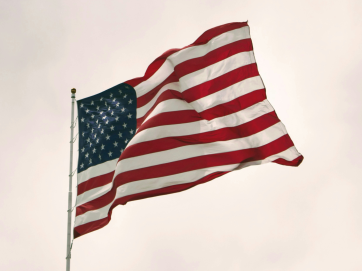Lord and Taylor has built a bower of evergreen-and-pinpoint light covered scaffolding along its Fifth Avenue storefront, where crowds gather all day long to gaze at the Christmas displays. This snowless year there is a house of 24 frosted windows that pop open in the countdown of a Nativity calendar to reveal pictures of kids sledding, a chickadee perched on someone’s hand, and other glimpses of winter wonderland. In another display, a conveyor belt in a sweetshop whirls an endless variety of frosted pastries past the lookers-on. And in another an army of gingerbread men hoist aloft a gingerbread mansion while doing a kind of gingerbread jig.
I welcome the store’s spirit, which even if it is 90 percent commercial still has elements of innocent exuberance. It is not as though we forget the grimmer side of things.
Mid-morning on the day before Halloween a building collapsed on W. 38th Street in Manhattan—on the other side of Lord and Taylor and just across the street and a few doors down from the office complex that NAS now calls home. Workmen had been tearing an old building down, floor by floor, for several months to make way for a new high-rise hotel. One of the workers, Pedro Basilico, aged 26, was killed. He had been working on the first floor when the five floors above him came crashing down. A co-worker, Kairo Garcia, 29, was buried alive in the rubble and rescued by emergency workers after three hours. Seventeen other workers escaped without injury from the non-union site.
Manhattan responds quickly to these small catastrophes. Within minutes the street was shut off and dozens of fire fighters and rescue personnel were calmly taking control. Pedro, a Mexican immigrant who had been living in the city for seven years, was reportedly supporting his family back home, and is now just another casualty of what the New York Times calls the “frenzy of construction on commercial and residential buildings across all five boroughs.” The Times has begun a campaign to improve safety and reduce the “anonymous deaths” from the often careless way in which these workers proceed. Seven were killed between August and November. The collapse on W. 38th Street was apparently caused by workmen piling heavy debris on an upper floor. An engineer had issued a warning, which went unheeded.
Several weeks after the event, I stepped outside to see the block closed again, fire engines and rescue trucks at the ready. This time it was a team of window washers dangling twenty stories above the street on a broken platform. They were somehow brought to safety.
We are near the corner of Fifth Avenue, which not so long ago in historical reckoning was a dirt path called Middle Road. In the early decades of the 19th century, this part of Manhattan was mostly farmland—a point nicely illustrated in a 1924 volume, Fifth Avenue Old and New,[1] published by civic boosters on the centenary of the completion of the great road that leads from Washington Square up past the Empire State Building, the Public Library, St. Patrick’s Cathedral, Central Park, and the Metropolitan Museum. In the blink of an archaeological eye, a rural landscape became one of the most elaborately developed strips of real estate in the world.
The speed of that transformation is visible even now as the city continues to demolish and rebuild and demolish again to raise up ever taller and bigger declarations of purpose. Pedro Basilico didn’t die in a noble cause, but his death wasn’t exactly meaningless either. He was a small part of the epic enterprise that in two centuries has brought much of humanity out of poverty. The United States led that progress, and Fifth Avenue represents one of the monuments to the commercial civilization through which it was achieved.
This is worth bearing in mind during a season when prominent politicians, focusing on the social costs of prosperity, appear ready to trade much of the nation’s entrepreneurial freedom for greater economic equality. That trade-off, of course, finds its most robust supporters in the academy, where the demand for “social justice” often seems to drown out every other consideration. The post-Missouri wave of Black-Lives-Matter protests and the wave of capitulations by college and university presidents is part of that subordination of complex principle to simplistic politics of grievance.
There are good arguments against the moral meanness and intellectual shabbiness of the grievance movements that have overtaken so much of American higher education. But there is another kind of answer to the grievance mongering in the Fifth Avenue storefronts. Artificial as these displays may be and commercial as they undoubtedly are, they delight children and enrapture adults, who crowd in to take one another’s pictures against the backdrops. Dancing gingerbread cookies and nostalgic pictures of snow-covered benches don’t exactly explain why the campus protesters have it wrong, but they evoke yearnings for something better than the demands of the rage-filled levelers. What they evoke is partly but not entirely illusory: the possibilities of freedom and prosperity. Someone like Pedro Basilico who came to the U.S. in search of a better life may die in the attempt to achieve it, but it remains a compelling vision and one that grievance politics will never defeat.
[1] Fifth Avenue, Old and New, 1824-1924. Brown, Henry Collins. Published by Fifth Avenue Society (1924), New York, NY, 1924.













